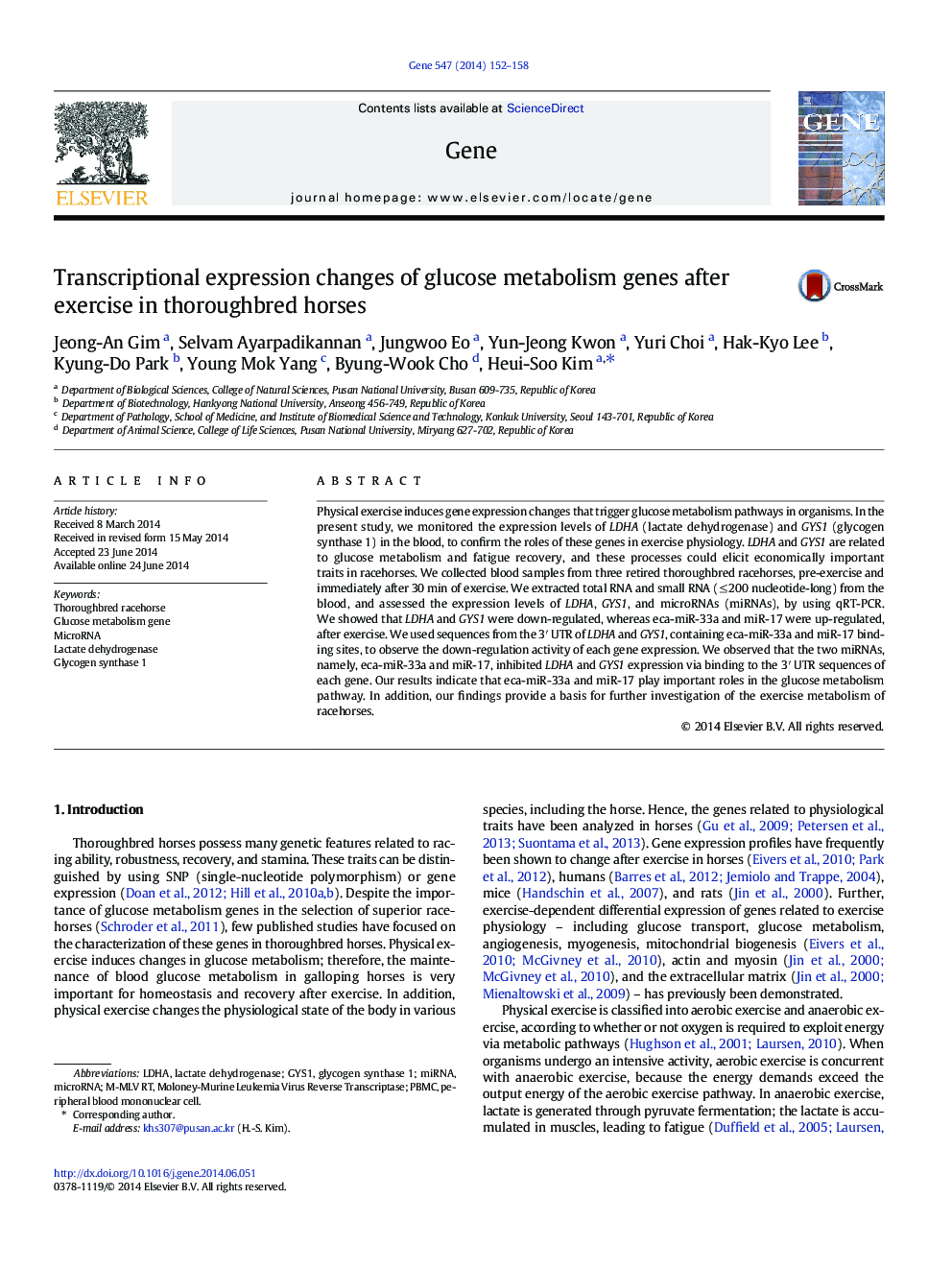| Article ID | Journal | Published Year | Pages | File Type |
|---|---|---|---|---|
| 2816298 | Gene | 2014 | 7 Pages |
•Glucose metabolism pathway is important for the organisms after exercise.•LDHA and GYS1 genes were down-regulated after exercise.•Target miRNAs, eca-miR-33a and 17 is up-regulated after exercise.•DNA methylation patterns were not significantly changed after exercise.•Two miRNA mimics inhibit target genes binding 3′ UTR of each gene.
Physical exercise induces gene expression changes that trigger glucose metabolism pathways in organisms. In the present study, we monitored the expression levels of LDHA (lactate dehydrogenase) and GYS1 (glycogen synthase 1) in the blood, to confirm the roles of these genes in exercise physiology. LDHA and GYS1 are related to glucose metabolism and fatigue recovery, and these processes could elicit economically important traits in racehorses. We collected blood samples from three retired thoroughbred racehorses, pre-exercise and immediately after 30 min of exercise. We extracted total RNA and small RNA (≤ 200 nucleotide-long) from the blood, and assessed the expression levels of LDHA, GYS1, and microRNAs (miRNAs), by using qRT-PCR. We showed that LDHA and GYS1 were down-regulated, whereas eca-miR-33a and miR-17 were up-regulated, after exercise. We used sequences from the 3′ UTR of LDHA and GYS1, containing eca-miR-33a and miR-17 binding sites, to observe the down-regulation activity of each gene expression. We observed that the two miRNAs, namely, eca-miR-33a and miR-17, inhibited LDHA and GYS1 expression via binding to the 3′ UTR sequences of each gene. Our results indicate that eca-miR-33a and miR-17 play important roles in the glucose metabolism pathway. In addition, our findings provide a basis for further investigation of the exercise metabolism of racehorses.
